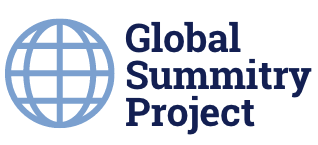Of all the summits that happen throughout the year, the G20 gets all the headlines, but what is the G20 and why should you care about it?
The G20 or “Group of 20” is a meeting between 20 of the most significant economies, and essentially functions as a “global steering committee” said Colin Bradford, a senior fellow at the Brookings Institution, who in 2004 was a key figure in urging the development of a Leaders’ Summit.
The G20 was officially formed in 1999 in part, by former Canadian prime minister Paul Martin and former German minister of finance Hans Eichel as well as U.S Treasury Secretary Larry Summers. But only since the financial crisis of 2008 have the leaders’ of these 19 countries plus the European Union met annually to discuss global issues.
The G20 includes the following nations: Argentina, Australia, Brazil, Canada, China, France, Germany, India, Indonesia, Italy, Japan, Mexico, Russia, Saudi Arabia, South Africa, South Korea, Turkey, The United Kingdom, The United States and The European Union with Spain as a permanent guest, and others invited by the host country.
But what does the G20 do?
In the early years of the G20, insulating against, and preventing another economic crisis like the 2008 global financial crisis, was pivotal but it was also important that other countries outside the larger powers have influence and say in the global economy and global governance.
In media, the G20 is often unintentionally represented as a single annual meeting between the leaders of some of the most significant economic powers. The reality, however, is quite different. The G20 is a complex, ongoing construct of tens and tens of ministerial, task force, engagement and working group meetings that take place throughout the year. This way the G20 can act more effectively as a global steering committee as countries, groups, ministers, etc. are able to share information and work together collectively to advance global governance policy.
“The coordination of banking standards is very much a part of the agenda”, said Barbara Martin, an adjunct professor at Queen’s University who has prior experience at the G20 co-chairing the G20 Anti-Corruption Working Group in 2013. “[The G20] creates these standards for countries to try to adhere to, it creates common understanding among governments… it also helps to manage if we get into another global financial crisis which we hit in 2008.”
However, over time, the G20 evolved into covering much more than just economic issues. Each summit brings its own agenda, but some common topics that are discussed include financial governance, climate change and sustainable energy, developing health and digital infrastructure and promoting growth and dealing with debt in developing nations.
This year’s gathering of the G20, held in Bali, Indonesia, in November, identified three priority issues: global health architecture, growing the digital space, and accelerating the sustainable energy transition. But another issue that was on the agenda, is the ongoing war in Ukraine.
“Never before in the history of the G20 have political issues been essentially on the agenda,” Bradford said. “We have the geopolitical issues… and we have the traditional agenda, which I would call the global governance agenda on systemic global challenges.”
Engagement groups like the Women20, Science20, and Youth20 each with a similar naming convention were introduced in recent years and focus on a variety of issues in their field. These different groups and their respective chairs meet throughout the year, during and outside of the G20. There are currently 11 working groups, one initiative and 10 engagement groups.
“The G20 establishment of engagement groups, comprising participants from each G20 member, provides a vehicle for such dialogue. Engagement groups meet to discuss key issues in their area of interest,” according to the government of Canada’s web page about the G20. “These groups often draft recommendations to G20 governments. While these recommendations are non-binding, they are taken into account by the G20 and contribute to the policy-making process.”
Difference between the G20 and the G7
While the G20 also includes the members of the G7, the two Informals function differently. The most obvious difference between the two is the number of attending countries, but the impactful difference is the political stance of the two groups. The G7 is comprised of seven Western nations, including Canada, France, Germany, Italy, Japan, The United Kingdom, and the United States, and because of this they tend to have an easier time reaching consensus than the G20, but this comes at the cost of generally not favouring nations outside of the Western powers.
“The G7 is an economic powerhouse, it can have very significant influence by the decisions it makes and the policies they agree to implement collectively,” said Martin. “The G20 is just a much bigger group and by virtue of a bigger group, it is harder to achieve consensus at more challenging policies.”
At the G20, member countries like Russia, Saudi Arabia, Turkey, and China can have very different viewpoints on how global issues should be handled, forcing Western powers like Canada and the United States to be more flexible.
For Bradford, the G7 being in a position of global governance is dangerous and believes that an institution like the G20 is essential to have countries with widely different ideologies working together peacefully and achieving global growth.
“I see the G7 as something that’s good for the West, when the West is unto itself, but isn’t great foreign policy towards the rest of the world,” Bradford said. “I hope very much that the G7 members understand this as they come into the G20 that you cannot play the same G7 music about democracy versus autocracy… You have to take a much more pragmatic, practical approach.”
What about Russia?
In 1997 the G7 became the G8, as Russia formally joined the group, though not for the finance ministers’ meetings. However, in 2014 Russia was suspended by the members of the G7 after Russia annexed Crimea. Russia then left in 2017 and the G8 became the G7 once again.
Barbara Martin said that although Russia’s invasion of Crimea was the driving force for their removal from the G8, another aspect she believed was part of Russia’s removal was that it was the only non-Western power in the group and would weaken the statements that the G8 could make.
“There was a G8 summit in Huntsville, [Ontario, Canada in 2010] and I was working on the leader’s statement for that,” Martin said. “I identified in that statement a number of red-line issues that I knew a number of the Russia diplomats were trying to get us to change the language on, to dumb-down the expressions of concern.”
In the end, Martin said that they scrapped the leader statement, with former prime minister Stephen Harper just giving a summary of what happened at the summit.
Why should you care?
While some may see the G20 as another summit where leaders make promises and set goals that they never accomplish, for Bradford the G20 is the only method available for world leaders to work together.
“The world needs a global steering committee, the world needs a focal point,” Bradford said. “You’ve got to deal with climate change, you’ve got to deal with health architecture issues… governments have to be willing to cooperate.”

